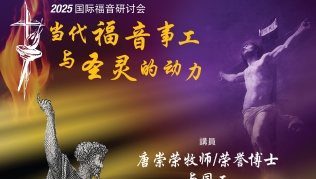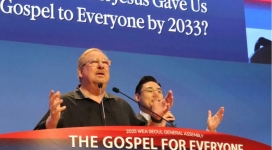For some cowboys in Mexico, the closest time to get next to God is during an annual, three-day pilgrimage through the central highlands of Guanajuato, which includes making an 84-mile trip to the mountaintop statue of Jesus Christ the King, among the tallest and most sacred in Mexico. More than 3,000 people made this year's journey to a mountaintop statue of Jesus, keeping alive a tradition that began 60-plus years ago.
The experiences of this year's pilgrims were highlighted Sunday by The New York Times, after they journeyed to the mountaintop last month.
Holding banners of Christ the King and the Virgin of Guadalupe, the cowboys carried out the family farming-related tradition, while also taking the time for self-reflection.
Juan Isidro, a farmer who has attended the pilgrimage for eight years, told the Times he fears many of the local traditions are being lost, due to not harvesting food as much as people did the in past. many family farms there have ceased, and construction has blighted the open countryside.
Most of the current pilgrims tend cattle and grow crops on the farms of Guanajuato. The journey is not merely an expression of faith; it anchors them to the past, wrote Paulina Villegas.

Some sought the comfort of religious purpose, while others were drawn to the adventure of sleeping under the stars. A few, hoping their sins would be washed away, sacrificed comfort for redemption. Others simply wanted to pray for rain after months of drought, Villegas explained.
A few participants suggested the desire to take strenuous trips in the name of religion was steeped in the nation's indigenous cultures, which value personal sacrifice and spiritual purity.
"We use our faith to survive, to overcome the bitterness of life," said José Reyes, who helps oversee the annual journey, which he has made for 40 straight years. "This journey makes me feel alive."
The pilgrimage dates to 1954, when a young cowboy named Nicolás García set off to visit the statue. Suffering from nervous breakdowns, anxiety and hair loss, García was told by doctors that his condition was terminal, his son said. Seeking help from above, García reportedly climbed the 8,900-foot hill known as Cubilete to pray before Christ the King.
During the journey, García came up with the idea of a yearly pilgrimage for the cowboys of the region, said his son Miguel Angel García, who is now in charge of the event.
García recovered from his afflictions after the trip, convinced the pilgrimage had miraculously cured him.
"On his deathbed, he asked me not to let that tradition die," said the younger García, who lost his father three years ago.
The 75-foot statue of Christ with open arms replaced a smaller version that was destroyed in 1928 during the Cristeros War, which was incited by the antichurch policies of President Plutarco Elías Calles. During the war, priests and Catholic parishioners alike were slaughtered, while anticlerical laws were enacted. The statue was reconstructed during the 1940s.
A Mass was again celebrated beneath the statue, with the cowboys attending on horseback, hats in hand. The priest told them that the pilgrimage was a sign of how much they needed God to withstand the pressures of modern life: crushing debt, illness, the violence of drug cartels and unemployment.





![[Exclusive Interview] Evangelist Stephen Tong exhorts the Chinese church to return to the foundations of reformed faith](https://www.gospelherald.com/media/cache/thumbnail/7/23/72340sp_273w_150h_1x_1y.png)

![[Exclusive] Rev. Dr. Richard Tin-Wo Cheung: walking between “charismatic” and “evangelical”](https://www.gospelherald.com/media/cache/thumbnail/7/23/72338sp_273w_150h_1x_1y.jpg)